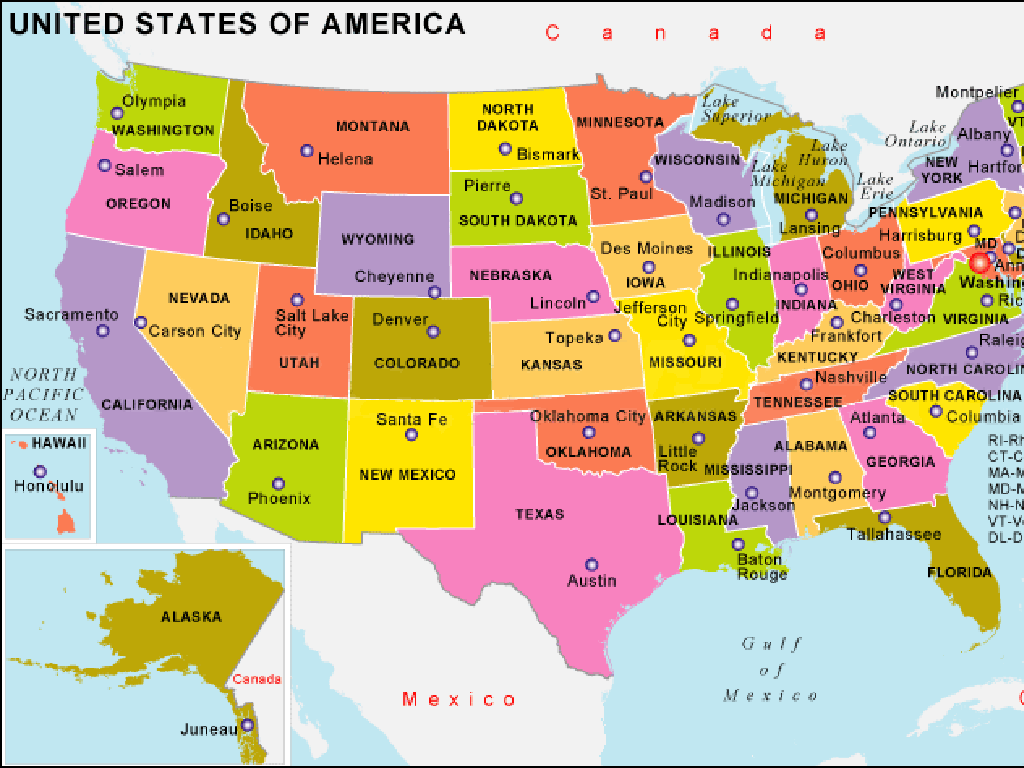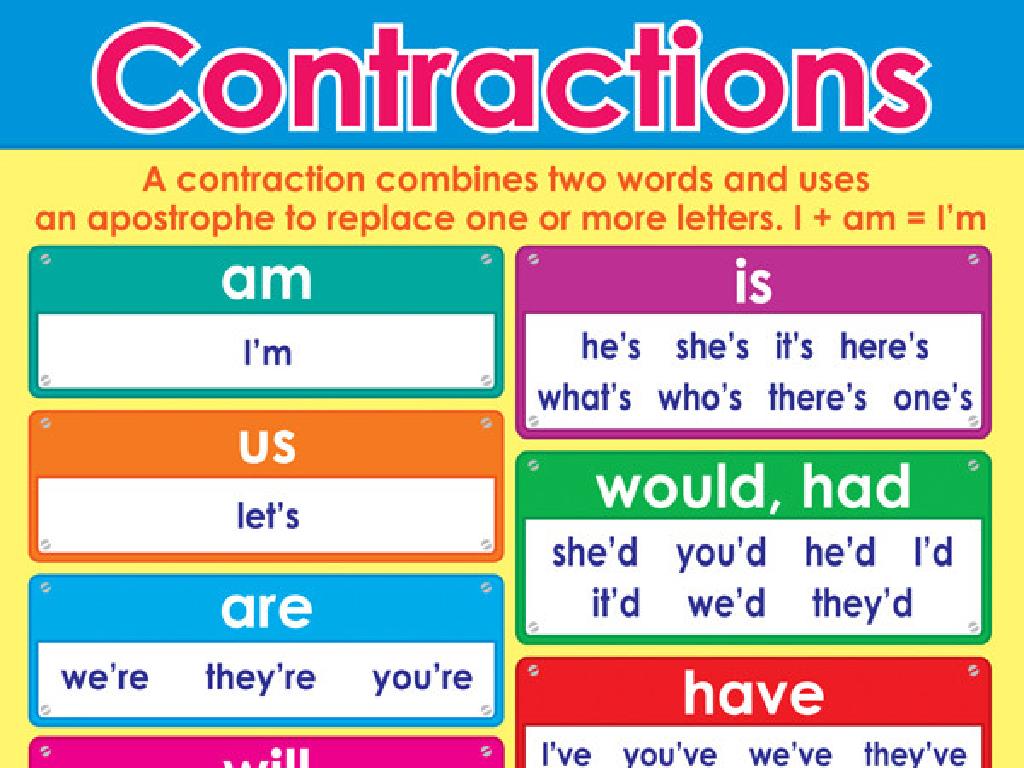Measure Using An Inch Ruler
Subject: Math
Grade: Second grade
Topic: Customary Units Of Length
Please LOG IN to download the presentation. Access is available to registered users only.
View More Content
Introduction to Measurement with Inches
– Understanding the concept of length
– Length is how long something is from one end to the other
– Introducing inches as a unit
– An inch is a small unit of length in the customary system
– The role of measurement in daily life
– We measure to fit clothes, cook food, and build things
– Practice measuring objects with a ruler
– Use an inch ruler to measure books, pencils, and more
|
This slide introduces second graders to the concept of measurement, focusing on length and the use of inches. Start by explaining that length is a way to see how long or short an object is. Introduce the inch as a standard unit of measurement in the customary system, which is commonly used in the United States. Discuss the importance of measurement in everyday life, such as in cooking, sewing, and construction. Encourage students to understand that measuring helps us create things that fit and work well. Conclude with a hands-on activity where students will practice measuring various objects around the classroom with an inch ruler. This will help them get a practical understanding of the length and the use of the ruler.
Learning to Measure: The Inch
– An inch is a unit of length
– It’s about the size of a thumbtack or a small paperclip
– 12 inches make a foot
– Count 12 thumb-widths to make a foot
– Estimate inches with fingers
– Use the width of your pointer finger to guess an inch
– Practice measuring with a ruler
|
This slide introduces second-grade students to the concept of measuring length using inches. Begin by explaining that an inch is a small unit of length, often compared to the size of a thumbtack or a small paperclip. This visual can help them remember the size of an inch. Next, illustrate that 12 inches make up a foot by having them measure and count 12 thumb-widths on a ruler, which is a fun and interactive way to understand the relationship between inches and feet. Encourage students to use the width of their pointer finger as a rough way to estimate an inch, which can be a useful skill when they don’t have a ruler on hand. Finally, provide rulers and have students practice measuring various objects around the classroom to reinforce the concept.
Reading an Inch Ruler
– Learn parts of an inch ruler
– Numbers represent inches, lines show fractions
– Differentiate long and short lines
– Long lines for inches, short for fractions
– Practice pointing to inches
– Point to 1 inch, 2 inches on your ruler
– Measure objects around you
– Use your ruler to measure things like pencils
|
This slide introduces students to the basics of using an inch ruler, which is a fundamental skill in measuring length. Start by explaining the parts of the ruler, focusing on the numbers and lines, and what they represent. Clarify that the longer lines correspond to whole inch increments, while the shorter lines are fractions of an inch. Engage the students in a hands-on activity where they practice pointing to specific measurements on their rulers, such as 1 inch or 2 inches. Finally, encourage them to measure various objects around the classroom to apply what they’ve learned. This practical exercise will help solidify their understanding of measurement and the use of an inch ruler.
Measuring with an Inch Ruler
– Steps to measure objects
– Place ruler’s end at object’s edge, read length at other edge.
– Practice with actual items
– Use classroom objects like pencils, books for practice.
– Tips to measure correctly
– Keep ruler straight and even with object’s edge for accuracy.
– Avoiding common errors
– Don’t start from 1 instead of 0, don’t hold ruler slanted.
|
This slide is aimed at teaching second graders how to properly use an inch ruler to measure objects. Begin with a clear, step-by-step explanation of how to align the ruler and read the measurement. Provide a variety of classroom objects for hands-on practice to reinforce learning. Emphasize the importance of accuracy by demonstrating common mistakes, such as starting at the 1-inch mark instead of the very beginning of the ruler or holding the ruler at an angle, which can lead to incorrect measurements. Encourage students to share their measurements with the class to foster a collaborative learning environment.
Comparing Lengths with an Inch Ruler
– Compare lengths of objects
– Use an inch ruler for differences
– Measure from one end to the other to see how long an object is.
– Find objects by length
– Look for things longer, shorter, or the same length as a pencil.
– Group activity: Length comparison
– Work together to compare and discuss your findings.
|
This slide introduces the concept of comparing lengths using an inch ruler. Start by explaining how to place an object alongside the ruler and measure from one end to the other without leaving gaps. Emphasize the importance of starting at the zero mark on the ruler. For the group activity, provide a variety of objects and have students find items that are longer, shorter, or equal in length to a reference object like a pencil. This will help them understand the practical use of measurement and develop their ability to estimate and compare lengths. Prepare to facilitate the activity by grouping students and ensuring each group has a ruler and a set of objects to measure. Encourage students to discuss their findings and explain their reasoning to the group.
Fun with Measurement: Classroom Adventure
– Measure classroom items with a ruler
– Use an inch ruler to find the length of pencils, books, and more.
– Record your measurement findings
– Write down the length of each item you measure.
– Share your measurements with peers
– Discuss what you measured and how long each item was.
– Understand inch ruler usage
– Learn how to hold and read an inch ruler correctly.
|
This slide is for a class activity that involves hands-on learning about measurement using an inch ruler. Students will measure various items found in the classroom, such as pencils, books, and small furniture, to practice their measuring skills. They should record their findings on a worksheet or notebook, noting the length of each item in inches. After the activity, students will have the opportunity to share their measurements with the class, fostering a collaborative learning environment. The teacher should provide guidance on how to properly use an inch ruler, including how to align it with items and read the markings. This activity will help students become familiar with the concept of measurement and the use of customary units of length. Possible activities include measuring window lengths, the height of a desk, the width of a textbook, and the length of a shoe.
Class Activity: Measure and Create!
– Measure parts for a craft
– Work in pairs: cut & assemble
Take turns, help each other measure and cut accurately.
– Show and tell your craft
Explain how you made it and the measurements used.
– Reflect on the measuring process
Discuss what was easy or hard in measuring items.
|
This activity is designed to give students hands-on experience with measuring objects using an inch ruler. Students will work in pairs to measure, cut, and assemble parts of a craft. This collaborative effort helps them to understand the importance of precise measurement and following instructions. After completing the craft, each pair will present their finished product to the class, explaining the steps they took and how they used the ruler to measure. Encourage students to reflect on their measuring experience, discussing any challenges they faced and how they overcame them. Possible crafts could include making a simple paper airplane, a bookmark, or a picture frame. Ensure that each pair has access to an inch ruler, safety scissors, and all necessary materials for their chosen craft.
Review and Quiz Time: Measuring with Inches
– Recap inches and measuring
– Remember, an inch is about the size of a thumb!
– Engage in a pop quiz
– Answer fun questions to show what you know.
– Discuss quiz answers
– We’ll go over the answers as a class.
– Learn from our mistakes
– Understanding errors helps us improve.
|
This slide is designed to consolidate the students’ knowledge of using an inch ruler. Begin by reviewing the concept of an inch and how to measure objects using an inch ruler. Follow up with a pop quiz consisting of simple questions to test their understanding. Make the quiz interactive and enjoyable to keep the students engaged. After the quiz, review the answers together, ensuring that students understand why each answer is correct or incorrect. Emphasize the importance of learning from mistakes and provide strategies for accurate measurement. This activity will help reinforce their skills and build confidence in using customary units of length.
Great Work on Measurement!
– Celebrate today’s learning
– Homework: Measure 5 home objects
– Find objects like a book, spoon, or toy
– Use your inch ruler for practice
– Record the length in inches on paper
– Keep practicing for perfection!
|
Today’s class focused on using an inch ruler to measure objects, which is a fundamental skill in understanding customary units of length. For homework, students are encouraged to find everyday objects around their home to measure. This will help reinforce their understanding of how to use a ruler and apply their knowledge in a practical setting. Remind students that accuracy is important and to align the ruler carefully when measuring. Encourage them to write down their measurements to share with the class. This practice will not only solidify their measuring skills but also build their confidence in using customary units of length.






